At the start of December, I was lucky enough to be able to travel to Japan for only the second time in my life. But unlike most tourists that flock to the mainstream destinations in Japan, I journeyed to the lesser-known Oita Prefecture in Kyushu for an incredible 3-day journey that filled every minute with incredible experiences.
If you’re planning a trip to Japan in the near future, consider travelling to this hidden gem. Not convinced? Read on to see what I did during my trip to Oita Prefecture and discover some of the best things to do in Oita!
Day 1: Showa no Machi → Futago-ji Temple → Maruka 3 Farm Stay
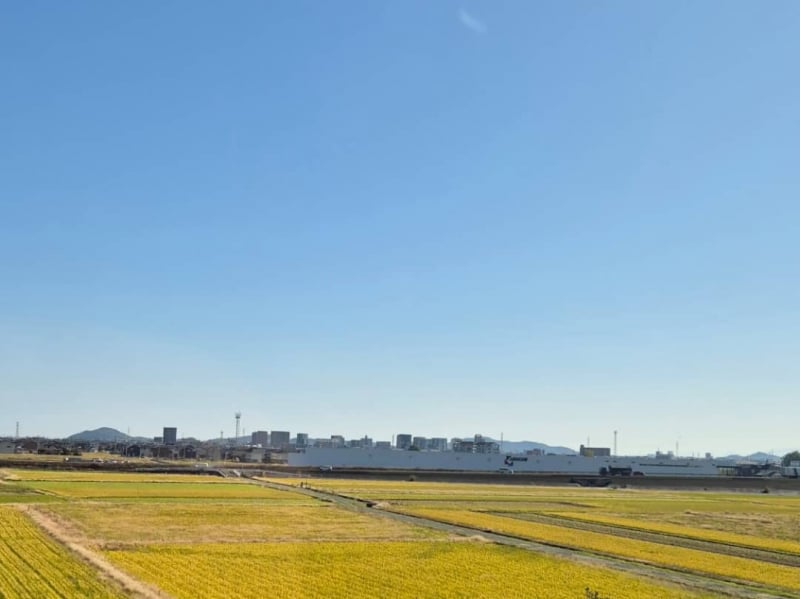
When the view outside the car looks this good, you can already tell it’s gonna be amazing
Upon arrival at Fukuoka International Airport, we were welcomed by our travel companion and guide, Haruka from Glide Japan, a local travel service provider specialising in tourism in Kyushu.
From the airport, we embarked on a two-hour road trip to Oita Prefecture, where our adventure would begin. While I was tempted to get some shut-eye during the ride, the picturesque scenery outside the car window kept me awake.
Normally, it would be the height of autumn in early November in Kyushu, but because temperatures were warmer, the season came much later, resulting in a much more contrasting mix of verdant greenery and autumn foliage. Nevertheless, the views along the drive were equally as spectacular!
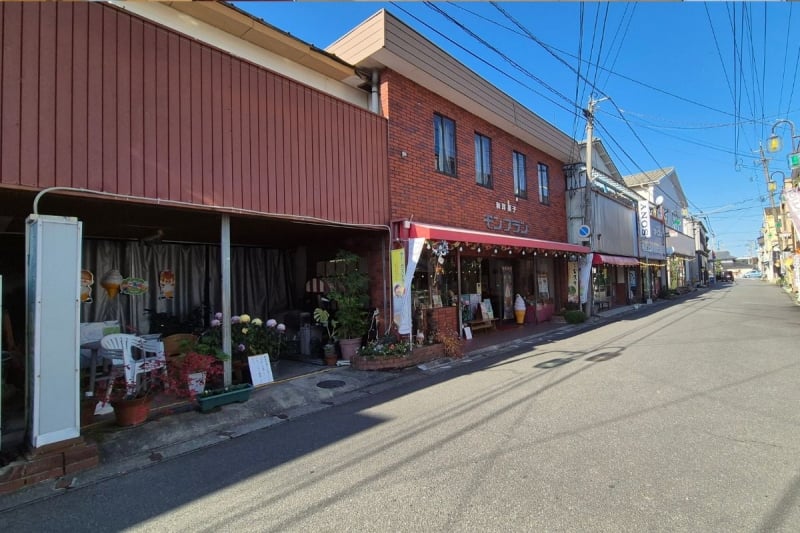
After two hours, we arrived at our “proper” first destination — Showa no Machi. As you might have guessed from the name, this little hidden gem in Bungotakada City is an enclave of nostalgia reminiscent of Japan’s Showa Period (1920s to 80s). Upon setting foot in the town area, you’ll feel as if you’ve been whisked away through a time portal to days long gone by.
The area exuded a calm, serene vibe, far removed from the bustling streets of Tokyo. Everywhere I looked, I saw well-preserved buildings, narrow alleys, and Insta-worthy shopfronts. As you traverse the area, you’ll find plenty of artisanal shops and eateries, many of which have been open for generations.
Lunch at Showa no Machi and visiting Showa Romangura
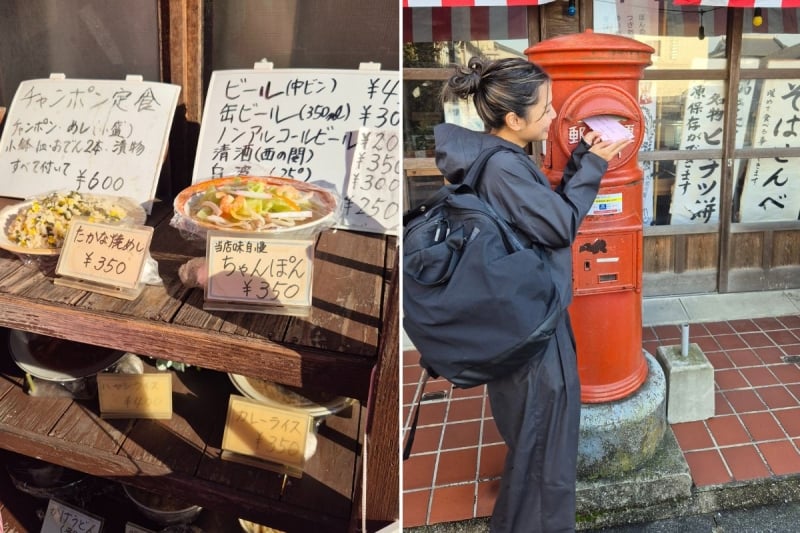
(L): A display of the menu and prices at Otoraya; (R): A vintage post box that is still working today
In particular, there is one restaurant called Otoraya on Eki Street, which is famous for selling food at the same unaltered price since 1980! Imagine, a plate of fried rice for just 350 yen (S$3) or kake udon for 200 yen (S$1.75)!
However, when we visited, the restaurant wasn’t open, so we headed to a cafe a few doors down, Cafe & Bar Boulevard for our lunch. What makes this cafe unique is its nostalgic Showa classroom setting, punctuated by desks and furniture from actual schools in the past. Even the food trays and utensils are from the Showa era!
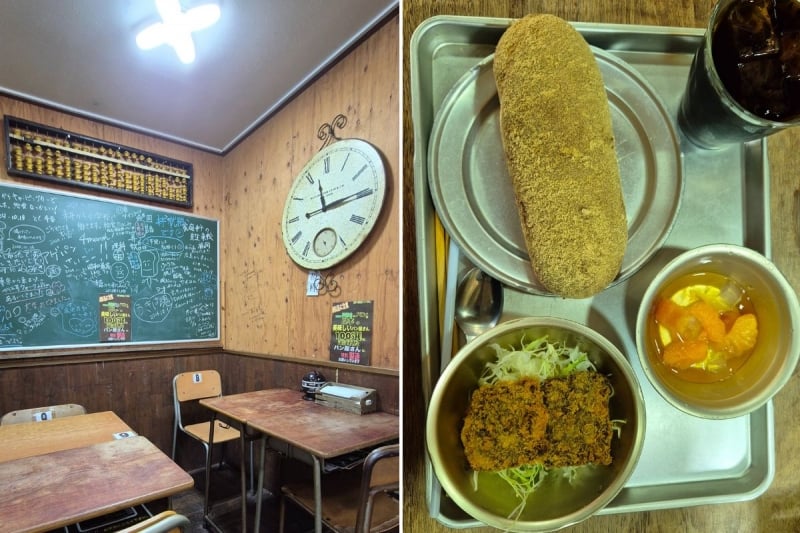
The interior of the cafe and the lunch set that I wolfed down
The cafe’s throwback vibes are matched by its menu, featuring a fun selection of school meals that were common during that period of time. My favourite was the fried sweet bun, freshly made to order. After a long flight, it was the perfect comfort meal to warm me up. We recommend pairing your meal with a cup of filtered coffee for the ultimate indulgence!
After lunch, we took a walk around the area for a bit. All I can say is that if you love photography, you will absolutely adore this place. Every corner presents a picturesque spot for photos that will make your Instagram “pop”! What I liked most were the many antiques that you could see, such as an old gas pump and washing machine, that you can find throughout the area.
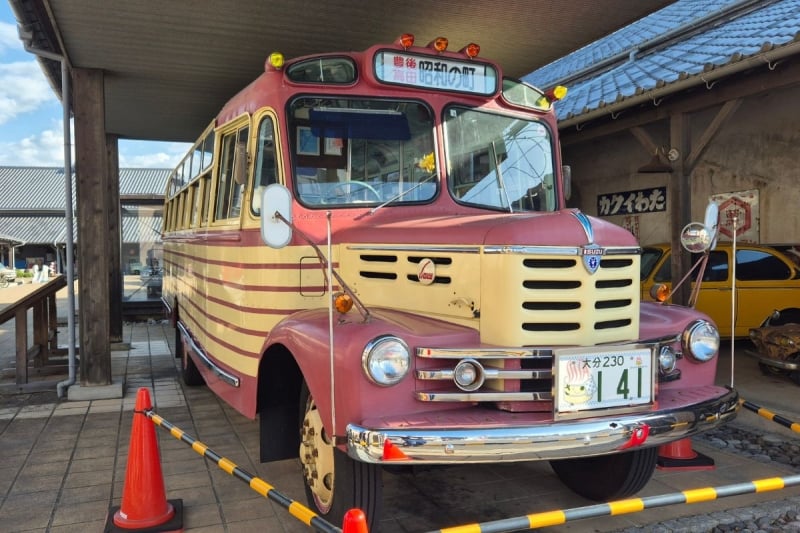
The 1957 Isuzu bonnet bus that tours around the Showa no Machi area
We then visited Showa Romangura, an exhibit space that showcases the deep history of Showa no Machi. There, you will also find a special 1957 Isuzu bonnet bus which is, incredibly, still functional! On weekends and special holidays, you can board the bus to go on a tour of the Showa no Machi area. There’s also a private gallery showcasing pop culture memorabilia that even Singaporeans will recognise.
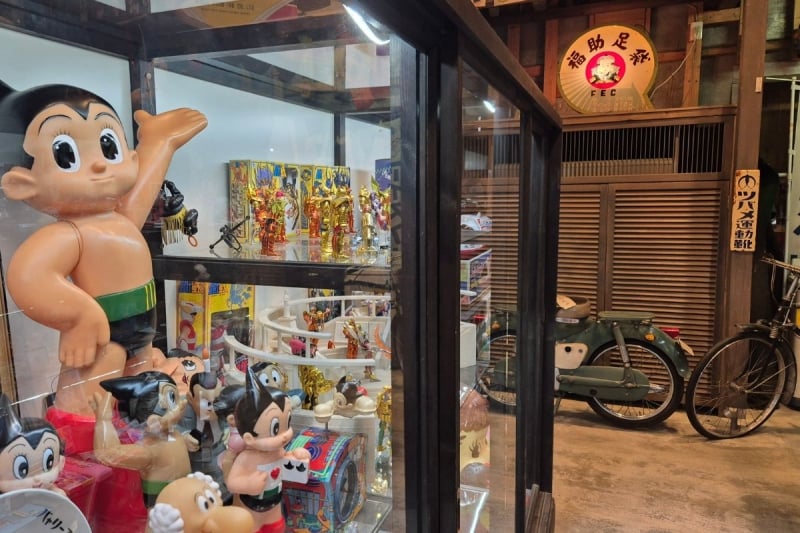
Visiting Futago-ji Temple and stopping for karaage
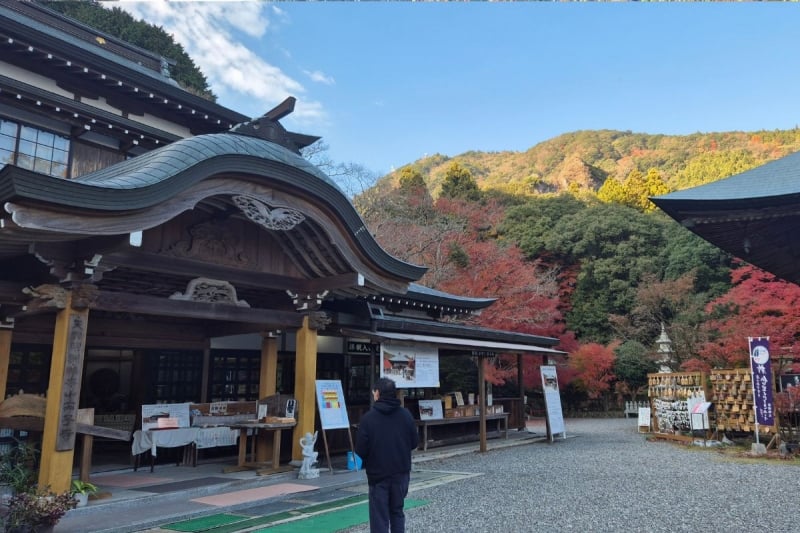
After exploring Showa no Machi for about an hour and a half, we headed towards Futago-ji Temple, which is home to the largest Nio (guardian deities in Buddhist lore) statues in the region. In fact, the foot of the steps leading up to the temple, marked by the two statues, is one of the most iconic Instagram locations in Oita Prefecture. Add to that the lovely autumn foliage in the surrounding forest, and what you have is a picture-perfect view that takes your breath away.
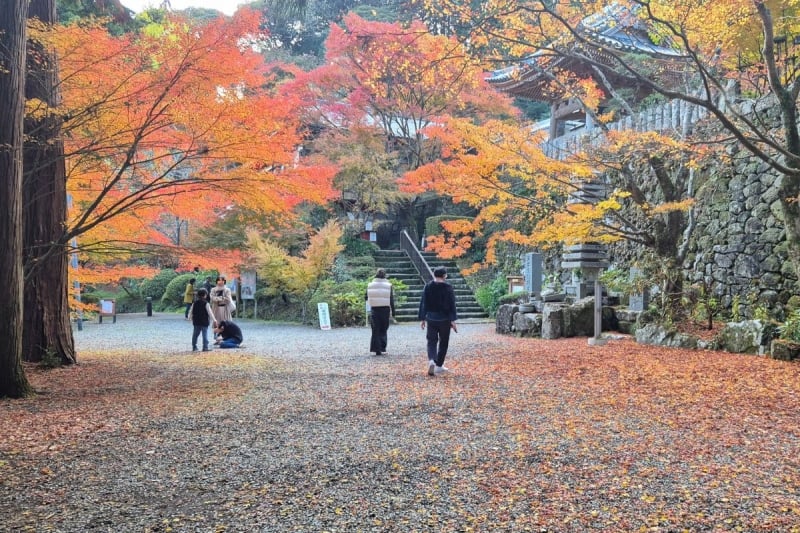
The temple itself, located on the hillside of Mount Futago, is a picture of serenity. It was built in 718 by a Buddhist monk as the centre of Rokugo Manzan, a unique religious culture on the Kunisaki Peninsula which combines Shintoism and Buddhism. Here, you can embark on a blissful hike through the pilgrimage path, whilst admiring the lovely scenery of autumn.
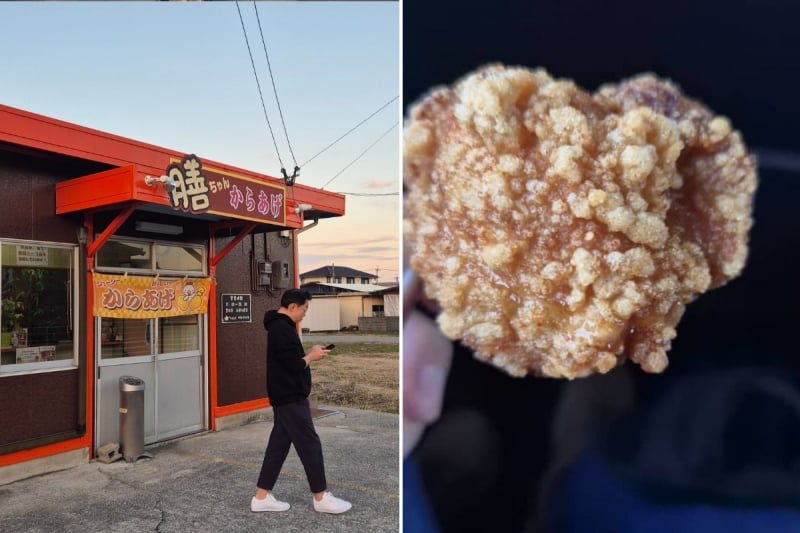
(L): The karaage shop we stopped by; (R): The masterfully cooked karaage
After taking in the views at Futago-ji Temple, we began our journey to our accommodation for the evening. However, along the way, we came across this unassuming karaage (Japanese fried chicken) shop by the wayside and decided to get some for ourselves. After all, Oita Prefecture is famous for this delectable delicacy! As we watched the cook prepare our order, my tummy began to rumble.
After a 15-minute wait, our order was ready and one bite was all it took for me to say “oishiiii”!
Settling into our farm stay
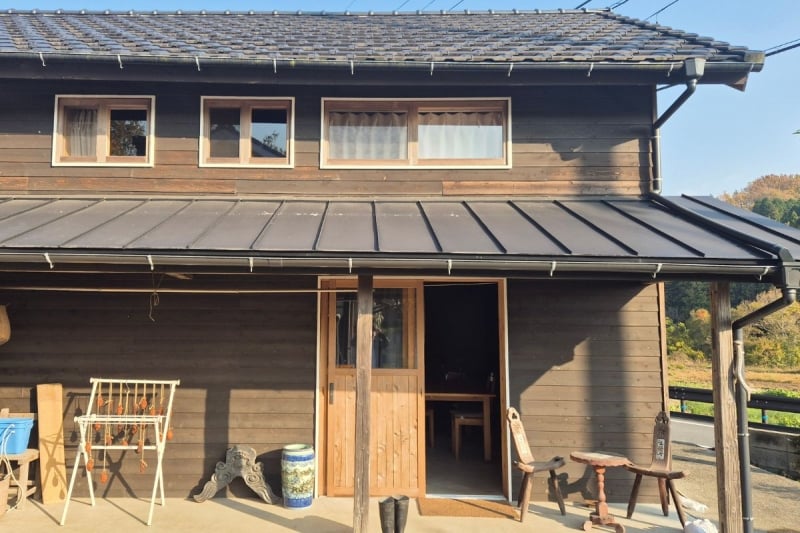
Our cozy accommodation for the night
With our bellies full, we finally made our way to our accommodation for the evening, Farm Stay Maruka 3, a lovely countryside farmhouse owned by a local family. You know how we sometimes have dreams of retiring to the countryside? Our stay at Maruka 3 was the perfect embodiment of life like that. Far away from the hustle and bustle of the city, it was a peaceful abode which really brought out the charm of simple and organic living.
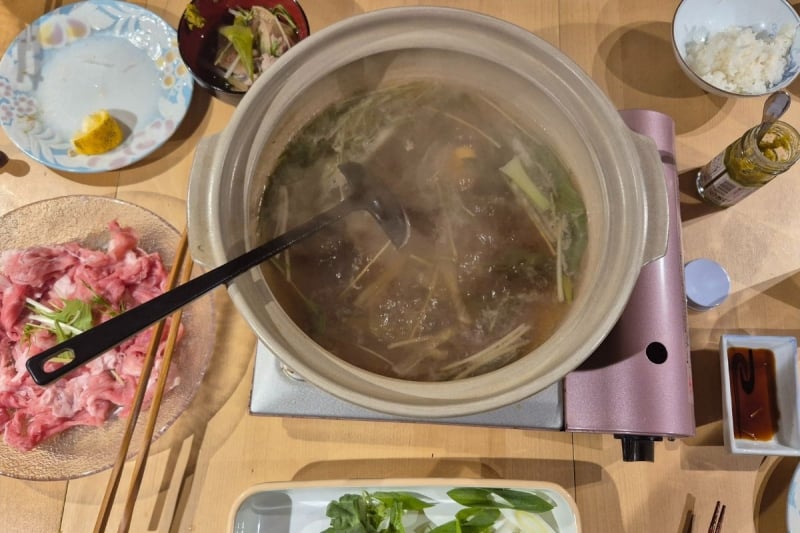
After settling in and a quick shower (the farmhouse has all the modern conveniences that make a comfortable stay, including a minibar, charging ports and an electric heater, we enjoyed a hearty meal with the owner, Ms. Fusako Kamihira. We enjoyed a hearty Japanese hotpot filled with organic ingredients from the farm. Not only was it a satisfying meal, but it was also filling and healthy! I’m not gonna lie, at that point, I had an urge to just stay indefinitely -wink-!
Day 2: Kitsuki Town → Space Beppu → Hells of Beppu → Kifune Castle
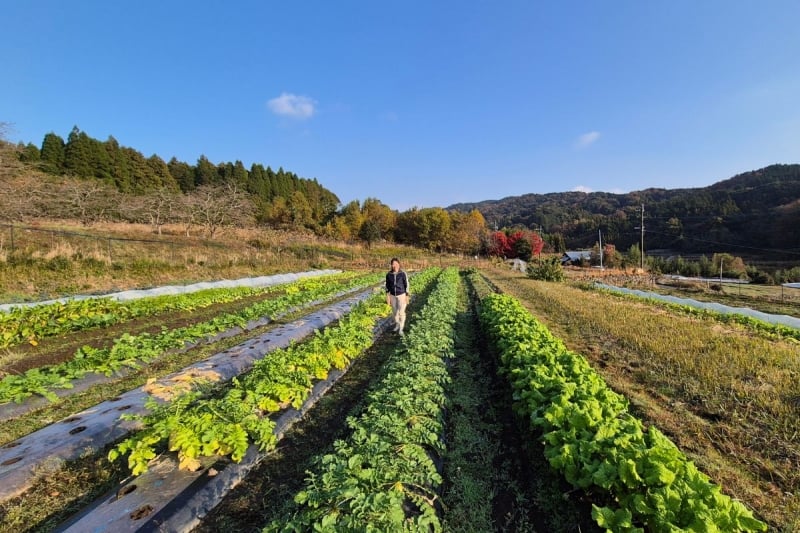
We woke up early the next morning (for some reason, it’s easier to wake up early in Japan than at home!), and were greeted by a traditional Japanese breakfast prepared by our lovely host. It was absolutely delicious and filling, which was good because we then departed to the farm to harvest some vegetables!
Upon arrival, I just remember thinking in my head, “This can’t be real” as I looked out at the scenery before me. It was as if I’d just stepped into a vibrant painting! Coupled with the fresh countryside air in the morning, it was such a lovely experience in the morning.
For those interested, you can actually apply to stay at Maruka 3 through WWOOF Japan, where you can stay in the farmhouse in exchange for a set number of hours working on the farm. I don’t know about you, but that sounds like the perfect exchange in my book!
After harvesting some vegetables from the farm, we headed back to the farmhouse where we said our goodbyes and headed to our next destination — Kitsuki Town.
Exploring the “hidden Kyoto” of Kyushu
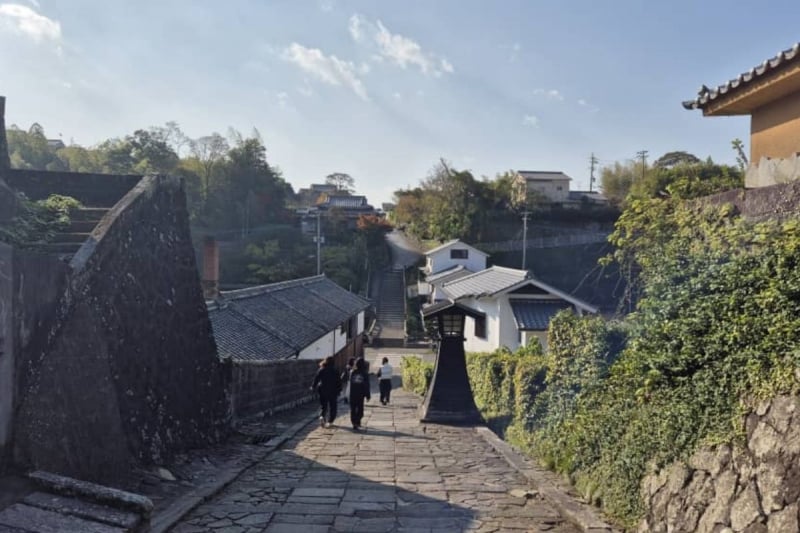
Without mincing words, Kitsuki Town was arguably my favourite location of the entire trip. Simply put, it is a historical town best explored in traditional Japanese costumes (there are kimono rentals available here). After all, its nickname is the “Samurai Town of Kimonos”, and some attractions offer free entry for those who visit wearing a kimono. Also, take it from me, but your photos here will look so much better too!
The moment I set foot in the town, I noticed how the town had a striking resemblance to the famous Gion District of Kyoto — picture Edo period houses, historical monuments, and rustic shophouses. In fact, locals call Kitsuki “Kyushu’s Little Kyoto” because of how similar the two locations are. The one difference you’ll notice is the clear lack of tourists in the area. Just imagine, being able to explore Gion without having to deal with crowded spaces, it’s the dream scenario for any avid traveller.
Enjoying splendid views in Kitsuki
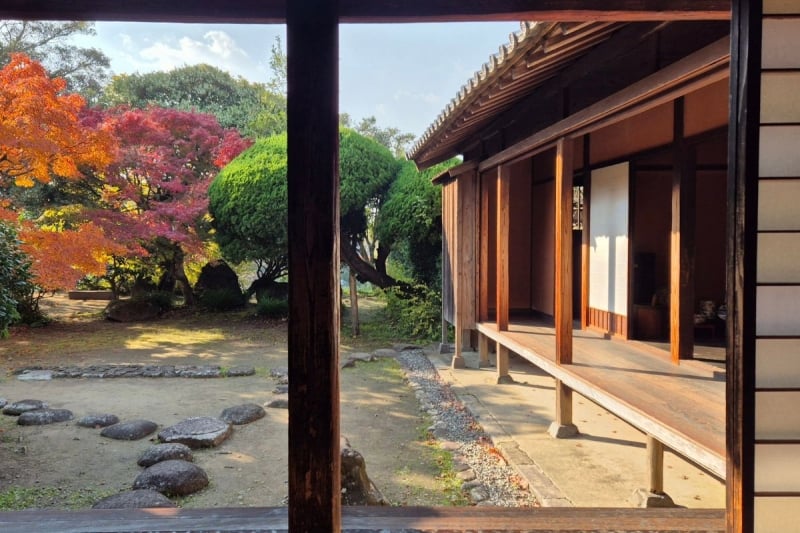
After meeting our guides from the Kitsuki Tourism Organization, we made our way to the Ohara-tei, a preserved Edo-period house where an elite family of samurai once lived. It was an interesting and oddly peaceful experience exploring the house, and understanding how these great warriors used to live in the past. The house also has an elegant Japanese garden that was absolutely stunning because of the autumn foliage.
We then headed towards a lookout point where we got to enjoy stunning views of the town and the Yasaka-gawa River. In the distance, we saw the silhouette of the Kitsuki Castle, the iconic landmark which the town was named after. Before making our way there, we took a quick look at the exhibits at the Kitsuki Castle Town Historical Museum.
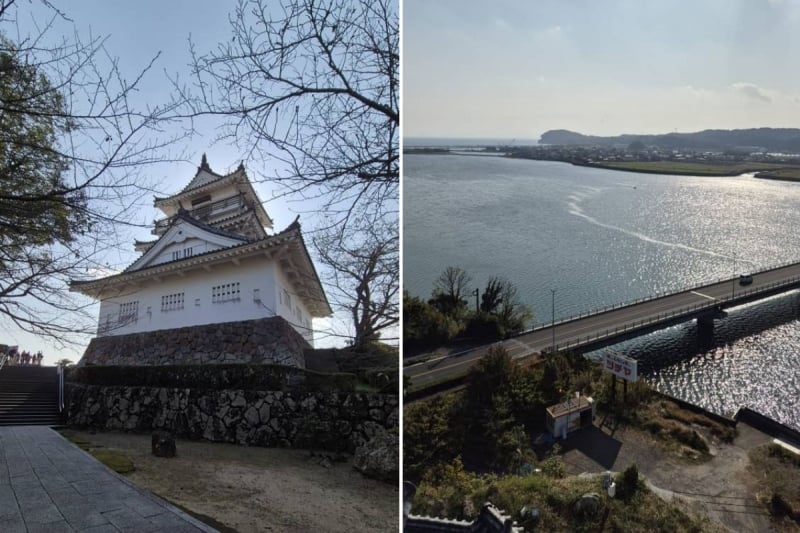
The castle vs the view from the top
At Kitsuki Castle, which is said to be the smallest of its kind in Japan, we headed to the very top where we enjoyed a panoramic view of the sea from the tower. For those looking for a memorable photo, you can also don samurai armour in the museum! But for me, the best part about Kitsuki Town is the town itself. Almost everywhere you look, there is a hidden gem to discover and a photo spot to satisfy your #potd needs.
Making dangojiru for lunch
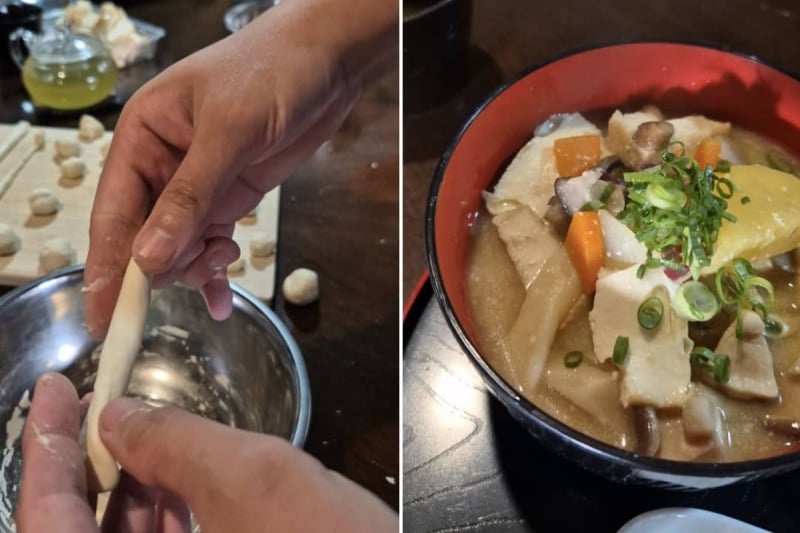
For lunch, instead of wolfing down delicious Japanese delicacies, we headed to Space Beppu, a community space that also serves as the office of Glide Japan. There, we met up with Mari-san, who was our instructor for the interactive cooking class that we signed up for.
Throughout the fun cooking class, we got to learn not only about the various cooking techniques of Japanese cooking (did you know that you should turn off the fire before adding miso paste?), but also the history surrounding Oita Prefecture’s delicacy. We made dangojiru, which is a flour-based noodle dish that came about because most parts of Oita weren’t suitable for growing rice.
The noodles were really easy to make and, served in the delicious broth that Mari-san made, with various vegetables, it turned out to be an extremely satisfying meal, perfect for the cool autumn weather! I highly recommend this activity if you’re ever in Beppu, it’s so relaxing and fun!
Note: Mari-san holds regular cooking classes for interested travellers, with a maximum of five or six participants per session. Each session can be made through reservation on the Space Beppu website.
Learning about hot springs and visiting the famous Hells of Beppu
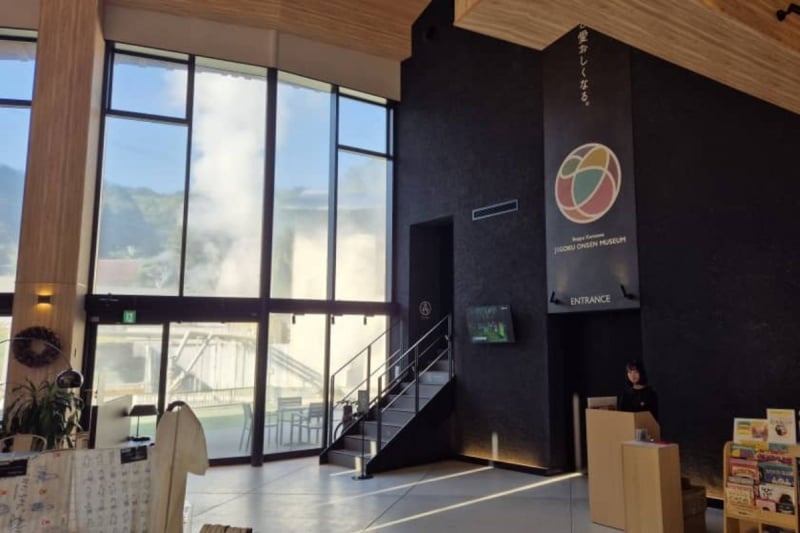
After lunch, we headed to the Beppu Kannawa JIGOKU ONSEN MUSEUM. But unlike most museums with plain exhibits, the experience at the Jigoku Onsen Museum was more hands-on. You’re given several items to start, including a quiz which you can complete for a prize, and sent on your way through an interactive, multimedia journey of discovery as you learn about the intrinsic history and formation of hot springs in Beppu.
I must confess that it was a real eye-opening experience, as up till that point, all I knew about onsens was that they were hot!
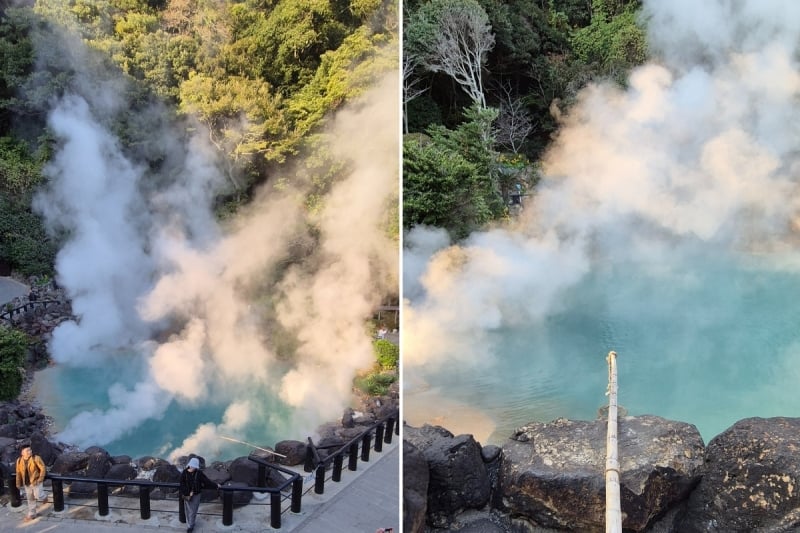
(L): The famous Umi Jigoku of Beppu; (R): Eggs being boiled in the onsen
After leaving the museum, it was time to visit the most iconic attraction in Beppu — the Hells of Beppu! Though the name might sound scary, it simply refers to the seven different types of onsen in Beppu, each a different shade of colour. They are called jigoku (hell) because the temperatures are so high, it’s impossible for anyone to bathe in them. Although, the steam of the jigokus and the water is often used to cook things like onsen eggs and pudding.
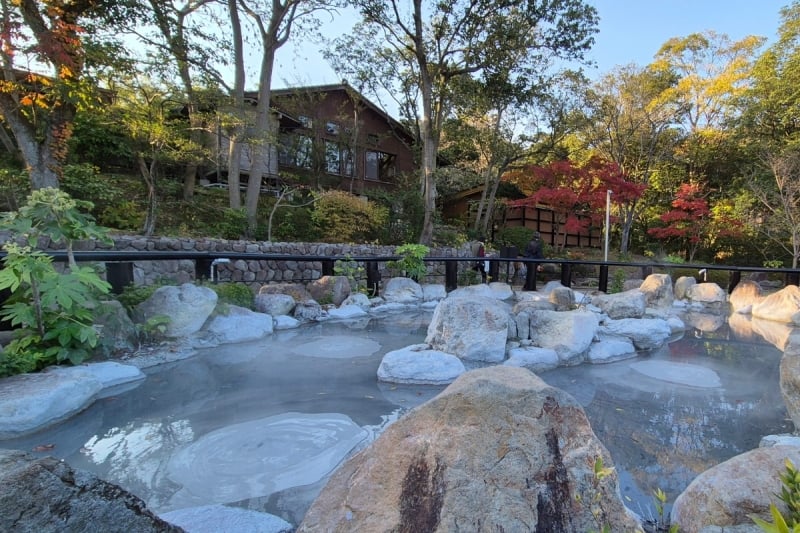
Oniishi Bozu Jigoku (Mud Hell)
We visited two of the jigokus that day, the lesser-known Oniishi Bozu Jigoku (Mud Hell) and the famous, blue-tinted Umi Jigoku (Sea Hell). The temperatures of these hot springs are 99 and 98 degrees Celsius respectively — literally boiling hot! While the Umi Jigoku makes for a much nicer photo spot because of the surrounding scenery (there’s also a lookout point), the Oniishi Bozu Jigoku was much quieter and had a sense of calm about it. Since they’re close by, we recommend visiting both!
Admiring the views at Kifune Castle and hitting an izakaya for dinner
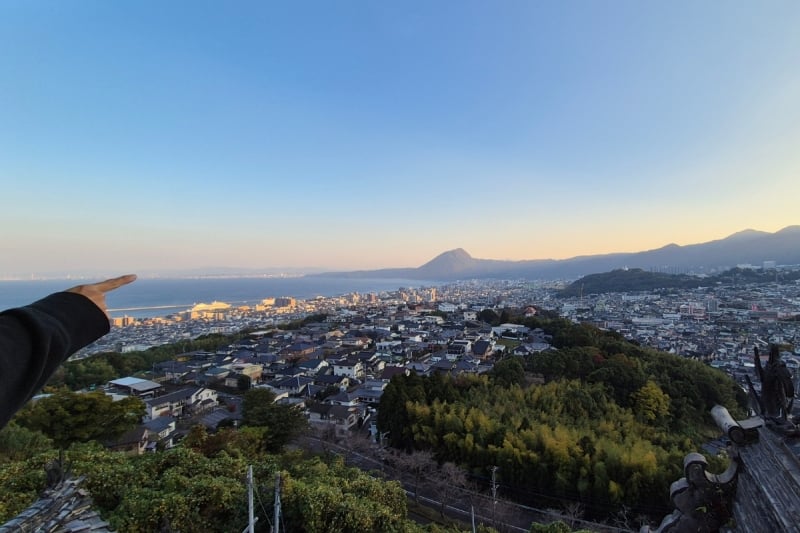
Before heading to our hotel, we stopped by Kifune Castle for an epic view of Beppu City. Before heading into the castle, you can catch a glimpse of a giant 4-metre white snake encased in glass (it passed away long ago), which is considered the lucky animal of the castle and its guardian.
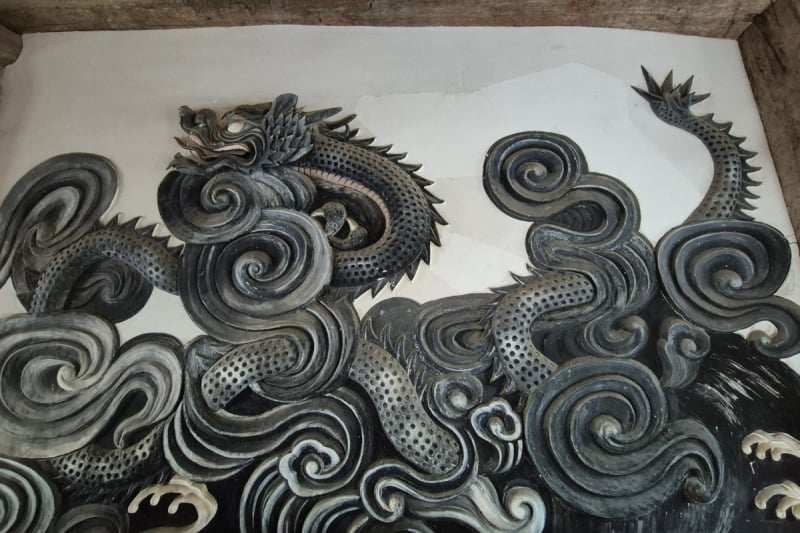
Within the small castle, you will find historical Japanese art pieces and a lucky, much smaller, white snake which you can touch for good luck. I’m not much of a reptile person, but I had to admit, hebi-chan (the snake) was very cute. Once you make your way to the top, you’ll find stunning scenery on all four sides. If you can time your visit for sunset, the view is even better!
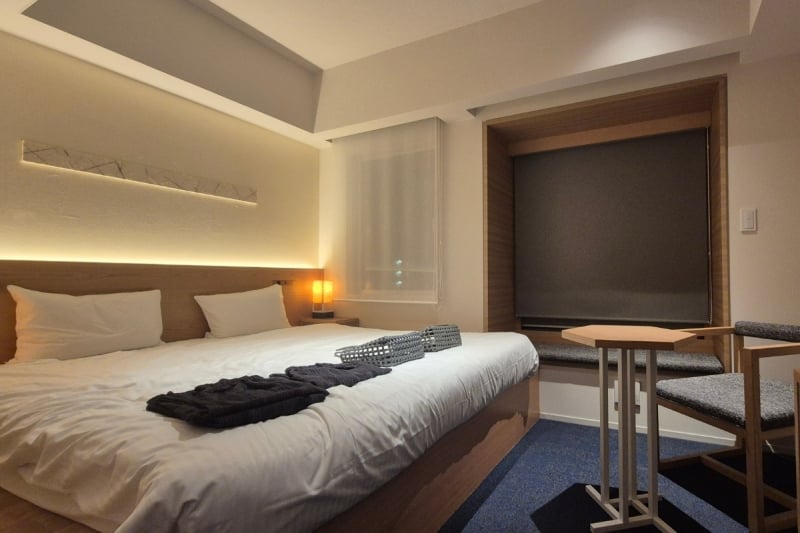
We then checked into our hotel before heading out for dinner at a local izakaya. Before retiring for the night, we visited a hidden cocktail bar (how hidden? Our guides suddenly stopped to open a random door, and we thought they’d lost their minds!) with an ambient atmosphere and relaxing vibe.
TripZilla Tip: If you’re in Beppu, consider staying at Amanek Beppu, one of the most popular hotels here. Not only is there a public bath with a natural outdoor hot spring, but there’s also a free yukata rental in the lobby for an even more immersive experience.
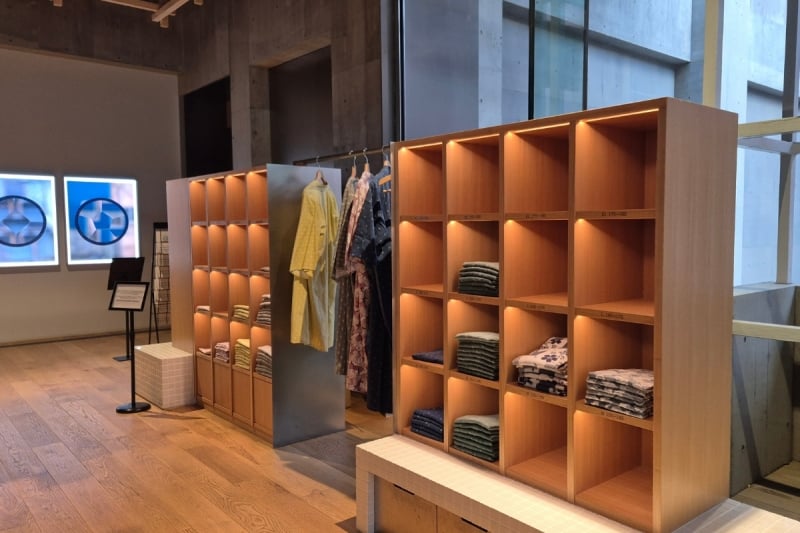
Day 3: Usuki Sekibutsu Stone Buddhas → Yakatajima → Hakata Yatai Street
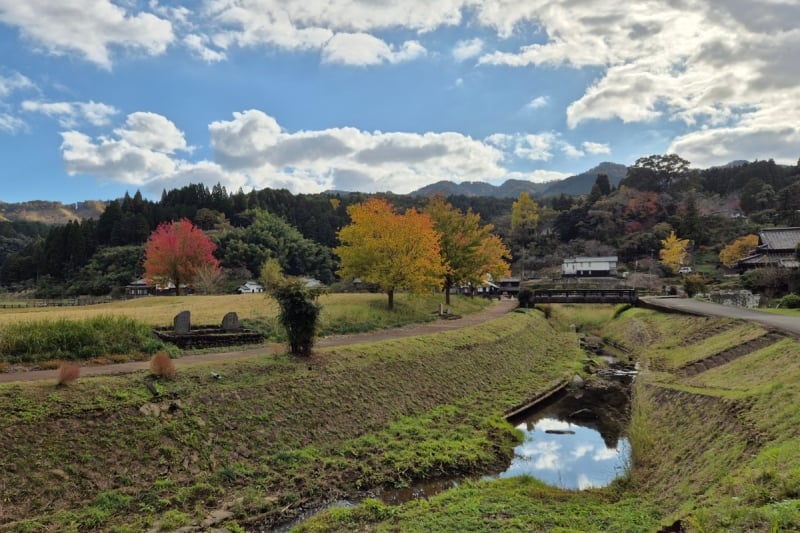
On our final day in Oita Prefecture, we first made our way to the Usuki Sekibutsu Stone Buddhas. Located next to a beautiful open field, the Stone Buddhas are a set of 61 statues carved from hardened volcanic ash throughout various times in history. The area, designated as a national treasure, contains statues that date all the way back to the Heian (794 – 1185) and Kamakura (1185 – 1333) periods.
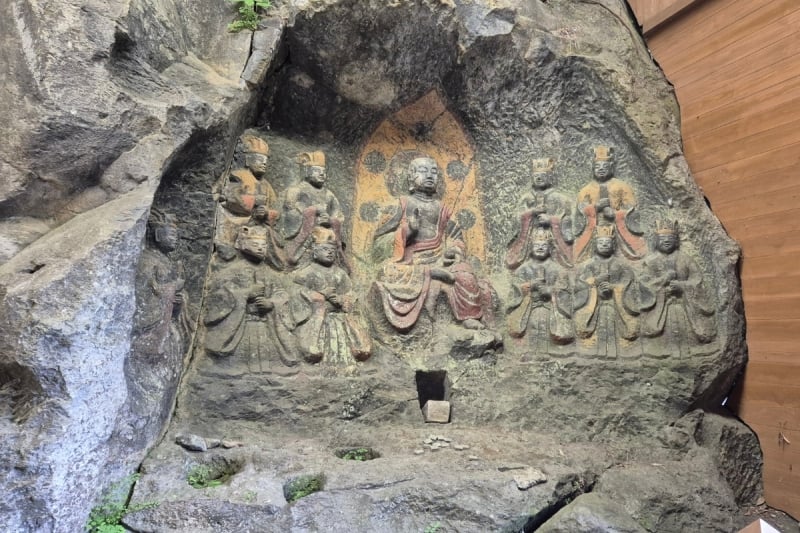
While you are free to explore the area on your own, we highly recommend getting a guide to walk you through the various clusters of statues, as the information along the way is simply too interesting to pass up. For example, did you know that the statues are of different levels of Buddhas and that some of the coloured statues have never been repainted since they were first carved? Despite that, they retain their vibrant colours, which is more evident when rainwater seeps through the cracks in the stone.
Beyond the Buddha statues, there are also plenty of historical landmarks and natural scenery to admire here, so we recommend spending at least an hour to take everything in.
Heading to the secret Yakatajima Island
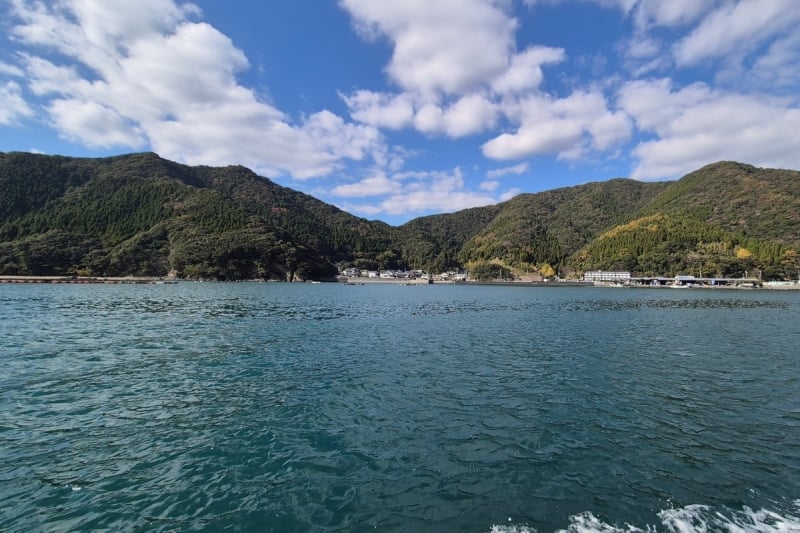
The view on the way to Yakatajima Island
What awaited us next was an adventure that I’m so glad I was able to experience. We went to Saiki City and headed to Kamae Port, where we met Takeshi Goto, the operator of Yakatajima Guesthouse and a resident of Yakatajima Island, our next destination.
We boarded his boat and travelled by sea for 10 minutes to this secret island off the coast of Oita Prefecture. What struck me the most was that the island is home to a grand total of 11 people, including Takeshi-san. Eleven!
Largely abandoned after most of the residents moved to the cities on the mainland, Yakatajima Island is a hidden gem where you can find rustic views, a quiet residential area that looks like a post-apocalyptic movie set, and a secret shrine hidden deep within the woods.
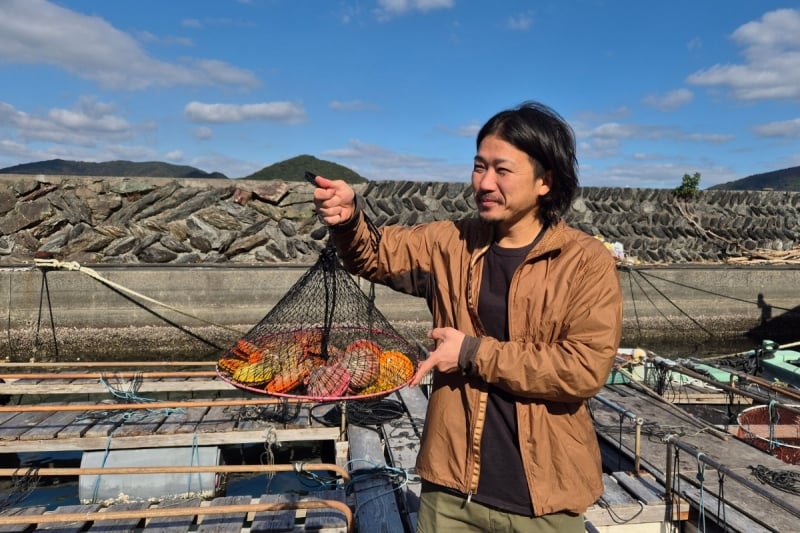
Takeshi-san proudly showing off the rainbow-coloured scallops
More importantly, Yakatajima Island is famous for its colourful noble scallops, the island’s main export. The scallops are farmed on the island for their colourful shells and plump, delicious meat. You can grill or cook the noble scallops in broth, but Takeshi-san chose to let us sample them in their most natural form — simply boiled with water. I’ll let you imagine the taste from the pictures, but what I can say is that they have a subtle sweetness that I can only attribute to their freshness.
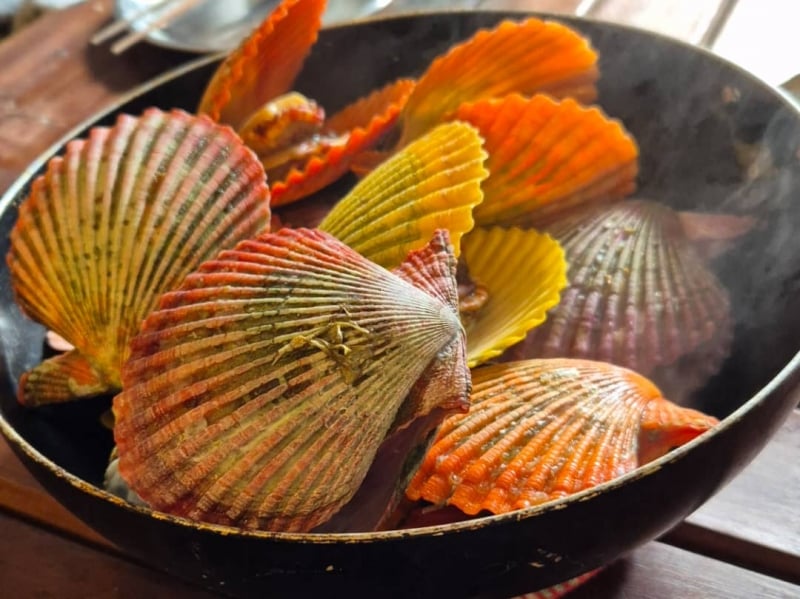
Making sushi for lunch
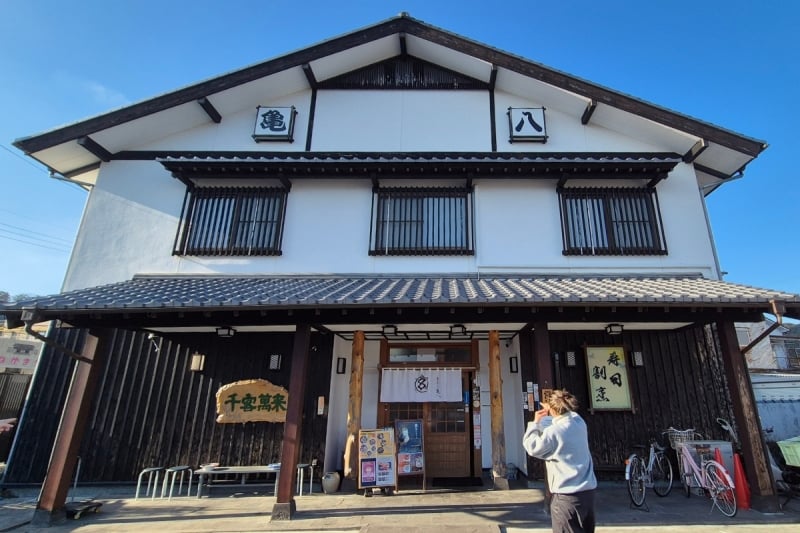
After taking plenty of photos, we boarded the boat back to Saiki City, where we participated in another hands-on cooking class. This time, we made sushi at Kamehachi Sushi under the watchful eye of the sushi master.
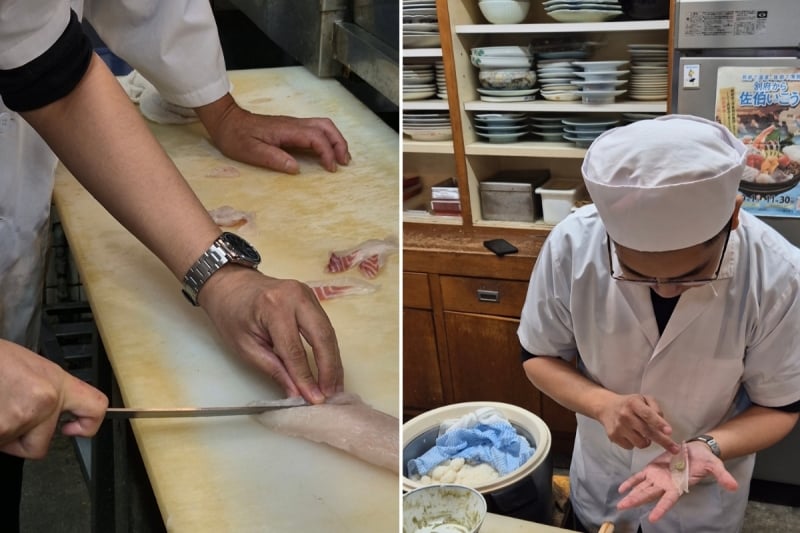
Now, I cook very often and am always confident in the kitchen. But all I can say is making sushi from scratch — from slicing the fish to shaping the rolls, is a lot more difficult than it looks. Ultimately, I managed to make three passable sushi rolls, which served as my lunch for the day. Maybe it was because I made them myself, or it was the relief of getting by without ruining any of the ingredients with my haphazard knife skills, but the sushi tasted incredibly good that day!
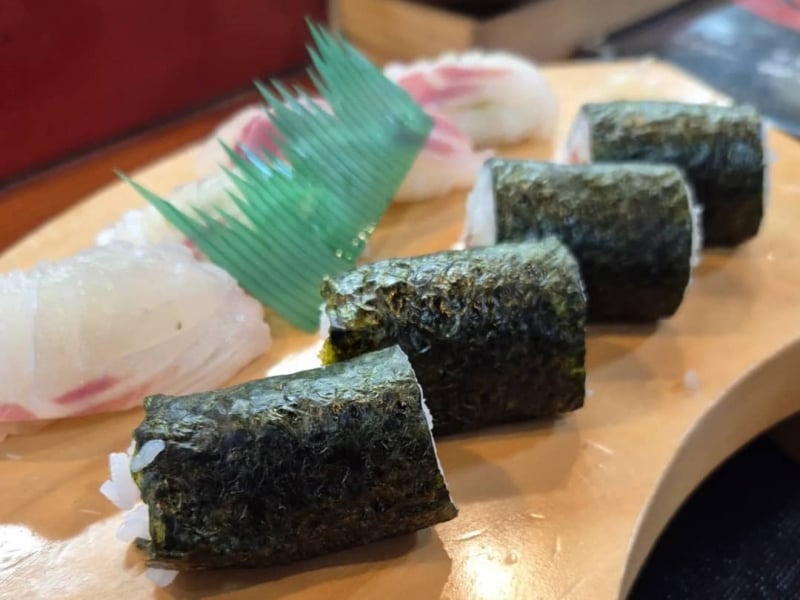
After lunch, we made our way to Beppu Station, where we boarded the train to Hakata in Fukuoka with heavy hearts. Even as I write this, I’m missing Oita Prefecture already!
Visiting Hakata’s famous Yatai Street
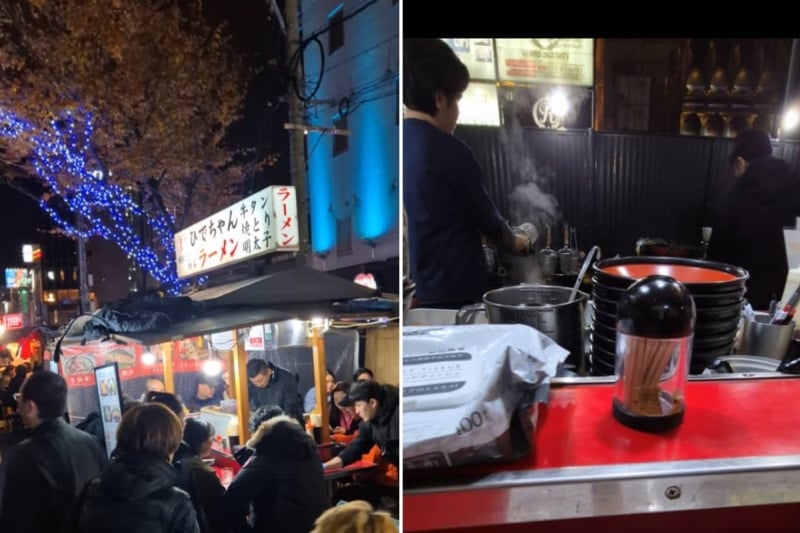
A crowded Yatai stall is a common sight in Hakata
Before flying back to Singapore, there was one last thing on my agenda — visiting the famous Yatai (food cart) Street in Hakata. Taking the train to Kushida Shrine, I walked through the nightlife/entertainment district of Hakata until I reached the edge of the Naka River.
There, I saw rows of yatai stalls lining the streets, each packed to the brim with hungry customers. For the uninitiated, yatai stalls are a classic way to dine in Fukuoka. Each food stall is manned by one or two staff and sits a maximum of eight or ten customers around an extremely cramped space.
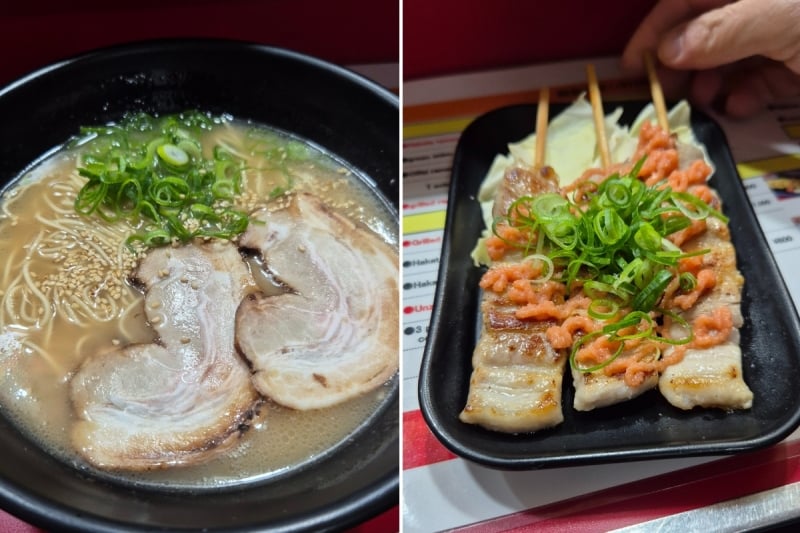
You watch as your food is prepared in front of you and eat quickly so that others have a chance to sit down. If you’re feeling it, you can even strike up a conversation with the (most likely) stranger next to you (again, it’s a very cramped space). Most yatai stalls serve a limited menu, often consisting of Hakata ramen, gyoza, and yakitori (grilled meat).
After dinner, I simply admired the view along the river before heading back to my hotel to call it a night. The next day, I headed to the airport and boarded my flight home.
Final thoughts
To say that I miss Oita Prefecture already is an understatement. Just the other day, I caught myself looking up flights to Fukuoka and JR tickets to other parts of Kyushu. The trip to Oita was a journey unlike my previous Japan trip, filled with memorable experiences and genuine connections with locals.
It also made me want to retire at a farm in Japan (perhaps one day?). Overall, it was a revitalising trip that allowed me to return home feeling refreshed and energised, which is the perfect ending to any holiday abroad. I look forward to my next trip to Oita, and I’m sure it’ll be just as memorable!
Special thanks to Oita Prefectural Tourism Association “Tourism Oita” for inviting me on such a memorable trip!






